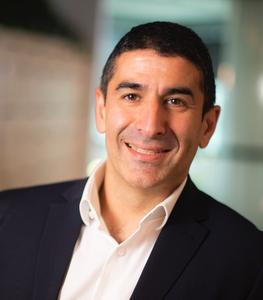CIO50 2022 #6 Farhoud Salimi, eHealth NSW

Early in his career when he was a member of the support team at an Australian bank, Fahoud Salimi discovered a simple error during an on-call support process led to a major system outage the next day.
As soon as he realised the cause of the outage, he told senior management, which led to a quicker resolution of the issue and the system being brought back online faster than anticipated.
“This situation taught me about the importance of transparency and escalating to senior levels as early as possible, even if the update was not good news. My team developed a saying, ‘go ugly early’ which I have maintained throughout my career.
“What I learned was that while the ideal situation is to have a solution to a problem, it isn’t necessarily needed prior to escalation,” he says.
These days, Salimi is the executive director of service delivery (CTO) at eHealth NSW, helping lead the digital transformation of Australia’s largest public health system, NSW Health.
The Critical Infrastructure Refresh Program, driven by Farhoud and his team, has transformed NSW Health’s approach to the management of its core clinical and corporate applications. The adoption of cloud services and the transition to the eHealth cloud platform was not a simple ‘lift and shift’ migration, it has changed the way the organisation operates, says Salimi.
The migration was used to refactor and optimise critical apps to take advantage of native offerings and managed services in the cloud; remodel the organisation’s structure to support a product team approach; strengthen partnerships with cloud vendors; and establish a digital academy to train staff.
The cloud platform has enabled 700+ self-managed cloud environments and hosts more than 25% of eHealth NSW’s production workloads.
Cloud technologies will also support ongoing innovations in advanced analytics, machine learning and artificial intelligence across the organisation.
Ambitious program, big results
The transformation program has resulted in a $25 million reduction in operating costs, a decrease in capital expenditure, and improvements in productivity across apps that have been migrated to the cloud.
There has been a 70% reduction in planned outages from repeatable infrastructure as code deployment models; clinicians and other NSW Health staff have saved between 116,000 and 144,000 work hours; as well as a reduction in the time required for new deployments by 80% on average across all apps.
Further, eHealth NSW is also reporting a reduction in the time it takes to establish environments from 6-8 weeks to an automated 2.5-hour window.
“The benefits of the move to the cloud were realised during the COVID-19 pandemic, allowing key eHealth NSW technology solutions such as Virtual Care, CoVax, VAM and VAXHub – to be developed in record time.
“These programs underpinned the NSW government’s vaccination campaign, and enabled NSW citizens to be kept safe through early, regular vaccination,” he says.
A new digital academy
Key to the implementation of the new operating model was the eHealth NSW Digital Academy. The Academy demonstrates Salimi’s dedication to workforce development by upskilling staff and providing them with a pathway to support this new way of working.
From its inception in 2020, the Academy is now one of the largest of its kind in Australia, says Salimi, with 630 staff completing the cloud stream in 2021.
The Academy has also expanded training to other key skill areas including cyber security, data analytics, human centered design and more. It offers foundational to advanced training, providing courses for everyone at eHealth NSW, regardless of role.
“Uniquely, it also leverages our strong partnerships with industry experts to offer virtual, face-to-face, experiential, and self-paced learning experiences as well as free certifications. Participants can also access on-demand support and augment their learning on the job, as well as through communities of practice,” Salimi says.
Over the past 18 months, more than 2,600 staff have completed at least one module across a variety of courses with 80% of participants stating it has improved their ability to deliver work, he says.
Tying technology to core business objectives
NSW Health’s cloud journey began with a directive requiring organisations in the network to use a range of managed statewide clinical, corporate and infrastructure ICT services, standards and platforms
Salimi played a pivotal role in influencing the NSW Health Secretary to announce this directive, which was based on advice provided by eHealth NSW.
He and his team demonstrated how cloud technology could be applied, as well as the financial and security benefits it would deliver – winning support form the NSW Health CIO executive leadership group.
Part of Salimi's success in influencing his c-suite peers is his ability to tie technology to the organisation’s core objective of providing positive experiences and quality health outcomes that matter to patients and careers. He influences by bringing conversations back to the overarching vision of using technology to establish a digitally-enabled and integrated healthcare system.
An example of this is his leadership of the NSW Health Enterprise Data Lake. Salimi and his team won support for this initiative from across the state with staff recognising that it has potential to improve clinical decision-making.
“Revolutionising how NSW Health staff can access, analyse, and use information, the data lake will increase the speed of clinical improvements, which will ultimately deliver better patient outcomes,” Salimi notes.
Byron Connolly